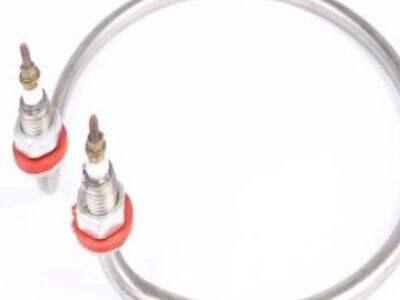Heating things are special tools that require electricity and silicone rubber heaters. They are meant to help you heat up objects quickly and efficiently. Like in hospitals, medical equipment; food factories, food safety; airplanes, where heaters are expected to keep parts warm, and so on. Different kinds of silicone rubber heaters are available, which make it difficult to find out which is suitable for your requirement. That’s why Lanchuang summarized the basics in a handy guide to help you find the right silicone rubber heater for your needs.
Silicone Rubber Heaters Types
Understanding the various types available in silicone rubber heater is crucial before making the right choice. Here are some of the better-known varieties:
Silicone rubber heaters: These heaters are made with wire that is tightly wound around an insulation material. A layer of silicone rubber is then applied to this assembly. GREAT FOR ADJUSTABLE AND STRONG -- These heaters are very flexible and strong. They are flexible and mold into various shapes, which makes them ideal for applications that require resistance to abrasions.
Etched-foil silicone rubber heaters These heaters are manufactured by etching nickel or copper onto the silicone rubber sheet using a special process. This technique makes them incredibly efficient at producing heat. They have high watt density—meaning they can generate a lot of thermal energy in a small area. This makes them excellent for the certain manufacturing processes that require extremely high heat.
Kapton silicone rubber heaters: These are a mix of silicone rubber and a material named Kapton. Kapton is extremely durable and protects itself from several harmful elements such as radiation and chemicals. With this, Kapton silicone rubber heaters are an ideal option for applications prone to exposure to harmful materials or surroundings.
Silicone Rubber Heaters: What to Consider Before Selecting
Considerations for Selecting a Silicone Rubber Heater Here’s a comprehensive list of things to consider:
Temperature range: The temperature range at which different silicone rubber heaters are designed to operate. Selecting a heater that can work within the temperature required by your application is extremely important. If the heater is unable to maintain the necessary temperature, it will fail to function.
FLEXIBILITY: If you need your silicone rubber heater to be flexibly mounted, look for a wire-wound type silicone rubber heater. These heaters bend and fit into tight spaces so they can be used in different situations.
Watt density: A silicone rubber heater’s watt density indicates how much heat it can generate per square inch. If your application needs a lot of heat in a short amount of time, you’ll want to go with an etched-foil silicone rubber heater. Higher the watt density, more heat the heater can generate in a small volume.
Determine What Watt Density is Best
One of the most critical parameters to consider in selecting a silicone rubber heater is watt density. It describes the amount of heat that can be generated by a silicone rubber heater in a small space. To determine the right watt density, consider the following guidelines:
The temperature is required by your application: If you want to create very high temperatures, silicone rubber heater high watt density is your best choice. This will ensure that the heater is capable of producing the heat needed for your particular application.
The size of the object being heated: If what you are heating is small, a silicone rubber heater with a high watt density may be needed to produce sufficient heat. Smaller items usually need more focused heat than can be achieved with sensor temperatures.
Material being heated: Some materials require a higher watt density to achieve a specific temperature than others. “For instance, thicker or denser materials may require more heat to reach the necessary temperature.”
Why Are Temperature Sensors Important?
Silicone rubber heaters have quite a significant role for temperature sensors. How these sensors then enables you to monitor the heater temperature and make sure it is functioning properly. Here are some common types of temperature sensors:
Thermocouples: These type of temperature sensor are the most commonly used with silicone rubber heaters. All thermocouples work by measuring the voltage generated when two dissimilar metals are connected, and they experience a temperature difference. This helps deliver accurate temperature readings.
Resistance temperature detectors (RTDs) — RTDs operate by sensing the amount of resistance difference in a metal wire as temperature varies. They are famous for giving highly accurate temperature readings.
Thermistors: Another type of temperature sensor that uses a special semiconductor material which resistance changes with temperature. When it comes to components, thermistors are robust, well established and accurate parts.
Efficiency versus Durability
There are several factors you need to consider while deciding which silicone rubber heater is good for you, that include comparing different silicone rubber heaters.
Higher watt density: As a thumb rule higher watt density silicone rubber heater are more efficient That means that they'll be capable of generating more heat in less time, which can be critical for specific applications.
Flexibility: Wire wound silicone rubber heaters are usually more robust than etched foil silicone rubber heaters. This flexibility allows them to handle more physical stress as time passes.
Temperature scope: Heaters that can work at high temperatures are typically hardier. They are designed to be rugged, allowing them to be used in even more applications.
Understanding the different types of silicone rubber heaters, the most important factors to consider when choosing a silicone rubber heater, how to select the proper watt density, and the importance of temperature sensors, will help you find a silicone rubber heater that meets your requirements. We are a leading silicone rubber heater supplier, and we can help you find your perfect heater! Get in touch with us now for more information about our products and services!



